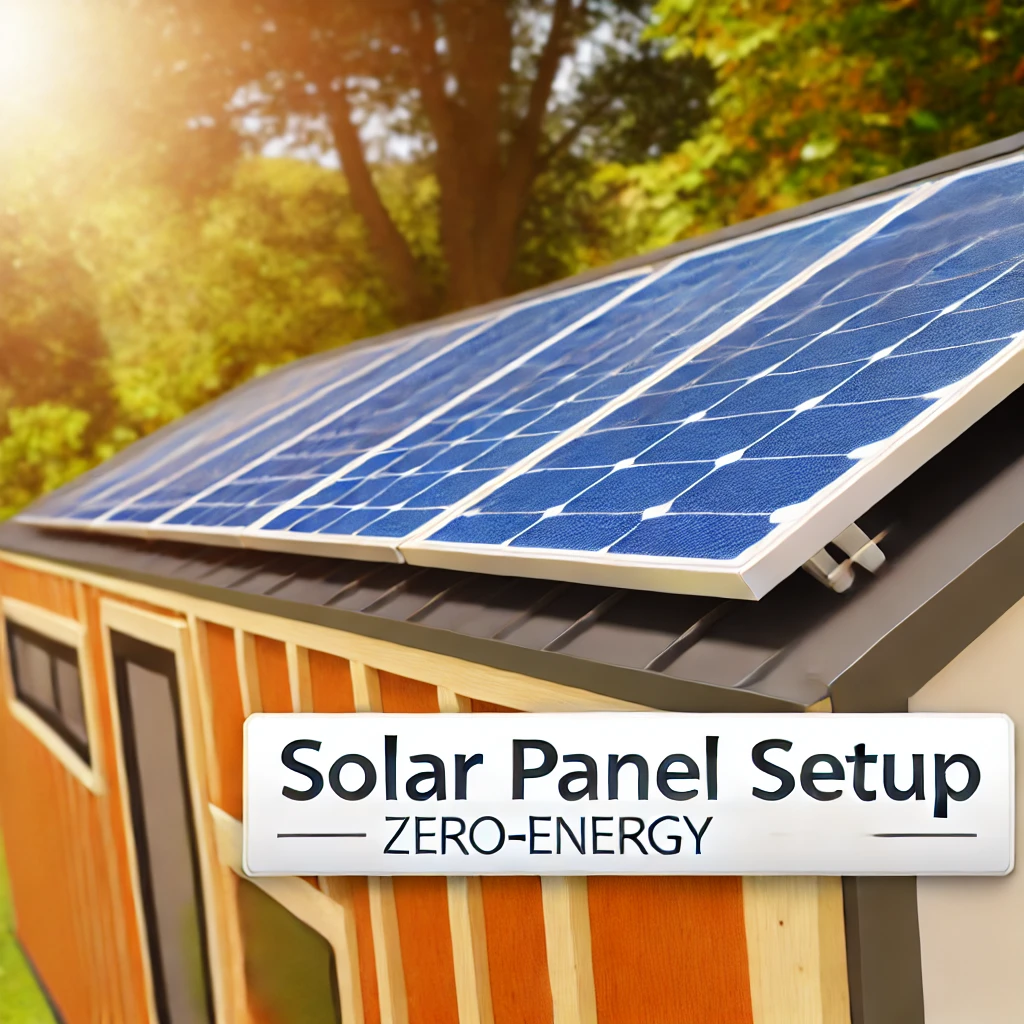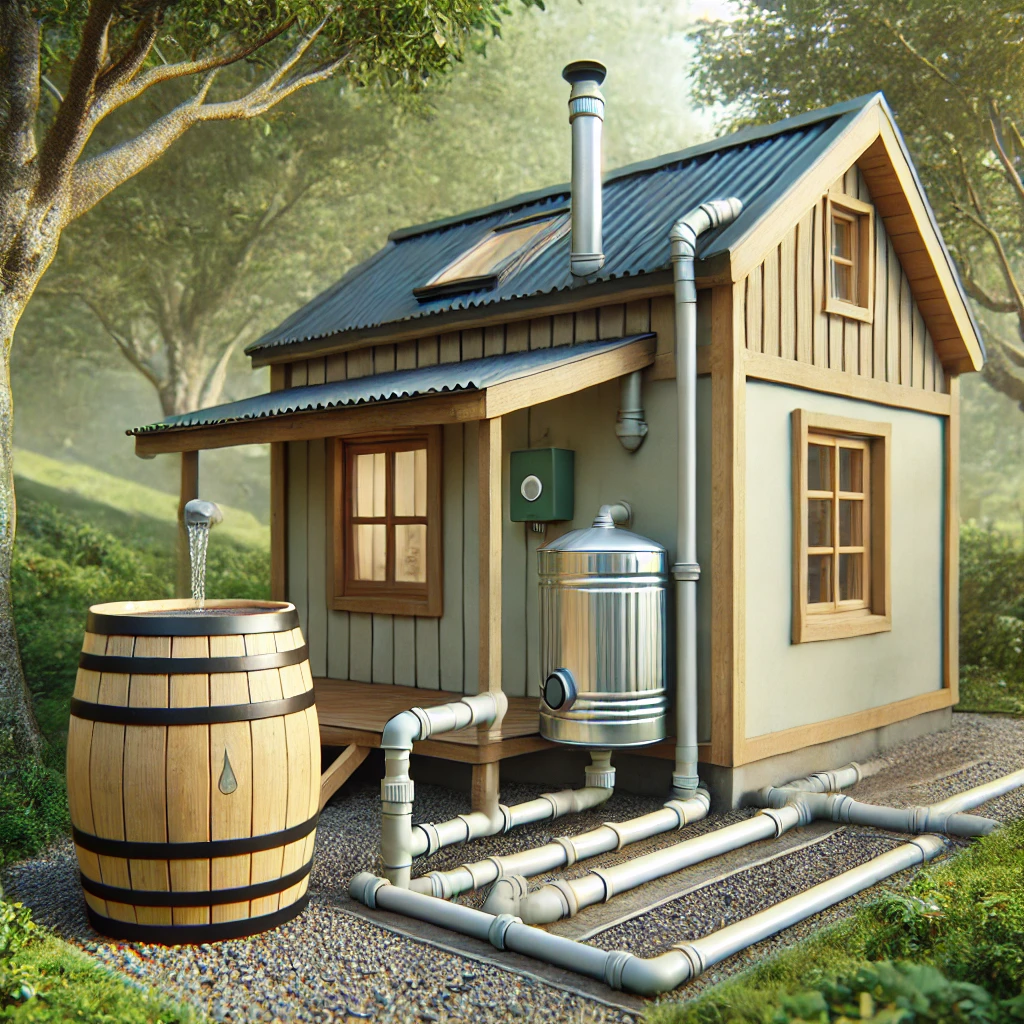Building a zero-energy tiny house offers a rewarding pathway to sustainable, energy-efficient living. With a smaller footprint and a design focused on self-sufficiency, tiny houses are a popular choice for those committed to reducing environmental impact. This guide provides a detailed, step-by-step approach to building a zero-energy tiny house, from planning and material selection to renewable energy and water systems. Whether you’re looking to DIY or hire professionals, this guide will help you achieve your zero-energy goals.
What is a Zero-Energy Tiny House?
A zero-energy tiny house is designed to produce as much energy as it consumes, resulting in minimal environmental impact and lower utility costs. This goal is achieved by combining sustainable building practices, renewable energy systems, and energy-efficient appliances. Tiny houses are ideal for this purpose due to their reduced energy needs, making it easier to attain a zero-energy balance.
Key Benefits of Zero-Energy Tiny Living:
- Cost Savings: Over time, lower energy and water bills save money.
- Eco-Friendly: Reduces carbon footprint and energy consumption.
- Self-Sufficiency: Off-grid power and water options make it easier to live independently.
1. Planning Your Zero-Energy Tiny House

Planning is crucial for any zero-energy build. Define your sustainability goals, evaluate your budget, and outline your design priorities.
Setting Clear Energy Goals
Establishing zero-energy goals early on helps guide all decisions, from material choices to appliance selection. Decide if you want your house to be completely off-grid or simply energy-efficient. For those wanting to go off-grid, consider investing in more robust solar systems and insulation.
Budgeting for Sustainability
Budgeting is key for sustainable building. Prioritize items that directly impact energy efficiency, such as insulation and renewable energy systems. Use the following cost breakdown table for an approximate idea:
| Project Component | Budget-Friendly | High-End |
|---|---|---|
| Insulation | $800 – $1,500 | $2,500 – $5,000 |
| Solar Power System | $3,000 – $5,000 | $8,000 – $15,000 |
| Water Collection System | $300 – $600 | $1,200 – $3,000 |
| Appliances (Energy Star) | $500 – $1,200 | $2,000 – $4,000 |
| Air Sealing and Caulking | $100 – $300 | $500 – $1,000 |
Investing in energy-efficient options pays off in the long run through lower energy bills and maintenance costs.
2. Choosing Sustainable Building Materials

Eco-friendly materials play a significant role in energy efficiency, air quality, and durability. Here’s a breakdown of the essential sustainable materials for a zero-energy tiny house.
High-Quality Insulation Options
Insulation keeps your tiny house temperature stable. Choose materials like:
- Cellulose: Made from recycled paper, it’s eco-friendly and cost-effective.
- Sheep’s Wool: Natural, sustainable, and effective in moisture-prone areas.
- Spray Foam: Provides high R-values and is ideal for sealing small spaces.
Consider consulting the U.S. Green Building Council for more on sustainable building materials.
Reclaimed and Recycled Components
Reclaimed wood, recycled steel, and salvaged windows add character while reducing waste. These materials often come at a lower cost and reduce the need for new resources. Look for suppliers like Habitat for Humanity ReStores or online marketplaces specializing in reclaimed building materials.
Low-VOC Paints and Non-Toxic Finishes
Use paints and finishes with low VOCs (volatile organic compounds) to improve indoor air quality. Look for certified low-VOC brands, which reduce harmful chemicals in your home.
3. Energy-Efficient Design and Layout

A well-designed layout minimizes energy use by taking advantage of natural light and ventilation.
Orientation and Window Placement
Orient your tiny house to maximize solar gain. South-facing windows capture sunlight, which warms your home during colder months. Choose double or triple-pane, low-emissivity (low-E) windows to reduce heat loss.
Natural Lighting and Ventilation
Optimize natural light by incorporating skylights, large windows, and open floor plans. Skylights provide overhead lighting, reducing the need for artificial lights, while strategically placed windows promote cross-ventilation to keep your home cool without air conditioning.
4. Installing Renewable Energy Systems

Renewable energy systems are a cornerstone of any zero-energy home. Solar panels are the most common choice, but wind turbines and hybrid systems can also be considered.
Sizing Your Solar Power System
Calculate your energy needs to size your solar system accurately. For example, a small off-grid system may require a 3-5 kW setup. Energy.gov’s Solar Energy Calculator is a valuable tool for determining your requirements.
Battery Storage for Power Stability
Battery systems provide backup power for cloudy days. Lithium-ion batteries are recommended for their efficiency and durability. Batteries can store excess energy, allowing you to remain off-grid even during energy-intensive periods.
Alternative Systems for Off-Grid Living
For windy areas, a small wind turbine can supplement solar power. Consider hybrid solutions if you live in a location with variable weather, as they provide a more consistent energy supply.
5. Insulation and Airtightness
Proper insulation and airtight construction help your tiny house maintain temperature without constantly using heating or cooling systems.
Insulation for Walls, Roof, and Floor
Focus on insulating every part of your house’s envelope. Spray foam provides the highest R-value but may be more costly. Cellulose is another sustainable option that balances effectiveness and cost. Insulate small areas like under counters and around door frames to prevent heat loss.
Air Sealing Techniques
Use caulking, weatherstripping, and vapor barriers to seal all potential air leaks. Gaps around doors, windows, and where plumbing or electrical lines enter the house are common sources of air leaks. Proper sealing reduces drafts and conserves energy.
6. Choosing Energy-Efficient Appliances and Lighting
Appliances and lighting are significant sources of energy consumption. Choosing energy-efficient options makes a big difference.
Energy Star-Rated Appliances
Opt for compact appliances certified by Energy Star, such as a small refrigerator, induction cooktop, and a low-energy washer. Energy Star appliances meet strict efficiency standards, helping you reduce electricity use.
LED Lighting
LED lights consume less power and have a longer lifespan than traditional bulbs. Use LED lights throughout your tiny house to save energy without sacrificing brightness.
Low-Flow Water Fixtures
Low-flow faucets, showerheads, and toilets reduce water consumption. This not only lowers water bills but also reduces the energy needed for water heating.
7. Installing Water Conservation and Waste Management Systems

Water management is essential for a sustainable tiny house, especially if you plan to live off-grid.
Composting Toilets
Composting toilets are water-free and convert waste into compost. They are eco-friendly and ideal for off-grid homes, with models available from reputable eco-friendly suppliers. Composting toilets reduce water use and provide a solution for homes without sewer connections.
Rainwater Collection System
A rainwater collection system can supply water for non-potable uses, such as irrigation and flushing. Install gutters and downspouts to direct rainwater to a collection barrel or tank.
Greywater Recycling
A greywater recycling system repurposes wastewater from sinks and showers for irrigation. Greywater systems are a sustainable choice for watering plants or other outdoor uses and help reduce overall water waste.
8. Off-Grid Living Considerations
If you want a fully self-sufficient tiny house, consider additional systems to support off-grid living.
Alternative Power Backups
A generator or additional battery storage can provide backup power. Solar panels are generally sufficient, but having a backup power source ensures you’re prepared for extreme weather.
Self-Sufficiency Tips
Indoor gardening systems or vertical gardens allow you to grow your own food. Combine this with your rainwater system for a self-sufficient home.
9. Maintaining Your Zero-Energy Tiny House

Routine maintenance ensures all systems remain efficient, helping you retain your zero-energy status.
Seasonal Maintenance Checklists
Regularly inspect your solar panels, insulation, and seals for any damage. Seasonal checklists help you address small issues before they affect energy efficiency.
Energy Monitoring Tools
Use smart meters or home energy monitors to track your consumption and identify areas for improvement. Monitoring your energy usage allows you to stay on top of any changes and maintain efficiency.
Final Thoughts on Your Zero-Energy Tiny House Journey
Building a zero-energy tiny house is a rewarding journey toward self-sufficiency, sustainability, and lower living costs. With careful planning, thoughtful material choices, and efficient energy systems, your tiny house can become a model of eco-friendly living. From selecting sustainable materials to implementing renewable energy systems and water-saving solutions, each step brings you closer to a home that minimizes environmental impact while maximizing comfort and efficiency.
By following this guide, you’re equipped to make informed decisions that will lead to a successful zero-energy build. Remember to periodically maintain your systems, monitor your energy use, and stay informed about advancements in sustainable technology. With commitment and care, your zero-energy tiny house can become a lasting investment in a greener, more sustainable future. Embrace the journey—each step you take is a meaningful contribution to sustainable living.
Feel free to bookmark this guide and download the provided checklists to keep your project organized. If you have questions or unique insights from your own journey, share them with our community! Together, we can inspire more people to join the movement toward zero-energy, eco-friendly living.
Related Articles
- Constructing Energy-Efficient Roofing: Materials and Techniques
- DIY Smart Home Integration for Energy Management
- Reclaimed and Upcycled Materials: Building a Sustainable Tiny House
- DIY Insulated Walls: How to Build for Maximum Heat Retention
- Building a Compact Bathroom: Design and Construction Tips
More from This Category
- DIY Tiny House Plumbing System: What You Need to Know
- How to Build an Outdoor Deck or Patio for Your Tiny Home
- DIY Sustainable Flooring Options for Tiny Houses
- Creating Built-In Storage Solutions During Construction: The Definitive Guide
- Installing Off-Grid Power Solutions: A DIY Guide
Additional Resources
- Building a Rainwater Collection System for Your Tiny Home
- Waterproofing Your Tiny House: Essential Steps for Longevity
- Budget-Friendly Tiny House Construction: Cost-Cutting Strategies
- Constructing Energy-Efficient Windows and Doors for Tiny Homes
- DIY Solar Panel Installation for Your Tiny House
- How to Install Insulation for Maximum Energy Efficiency
- Building a Tiny House Foundation: A Complete Guide
- Top 10 Construction Mistakes to Avoid When Building a Tiny House
- Essential Tools and Equipment for DIY Tiny House Construction
- Step-by-Step Guide to Building a Zero-Energy Tiny House
